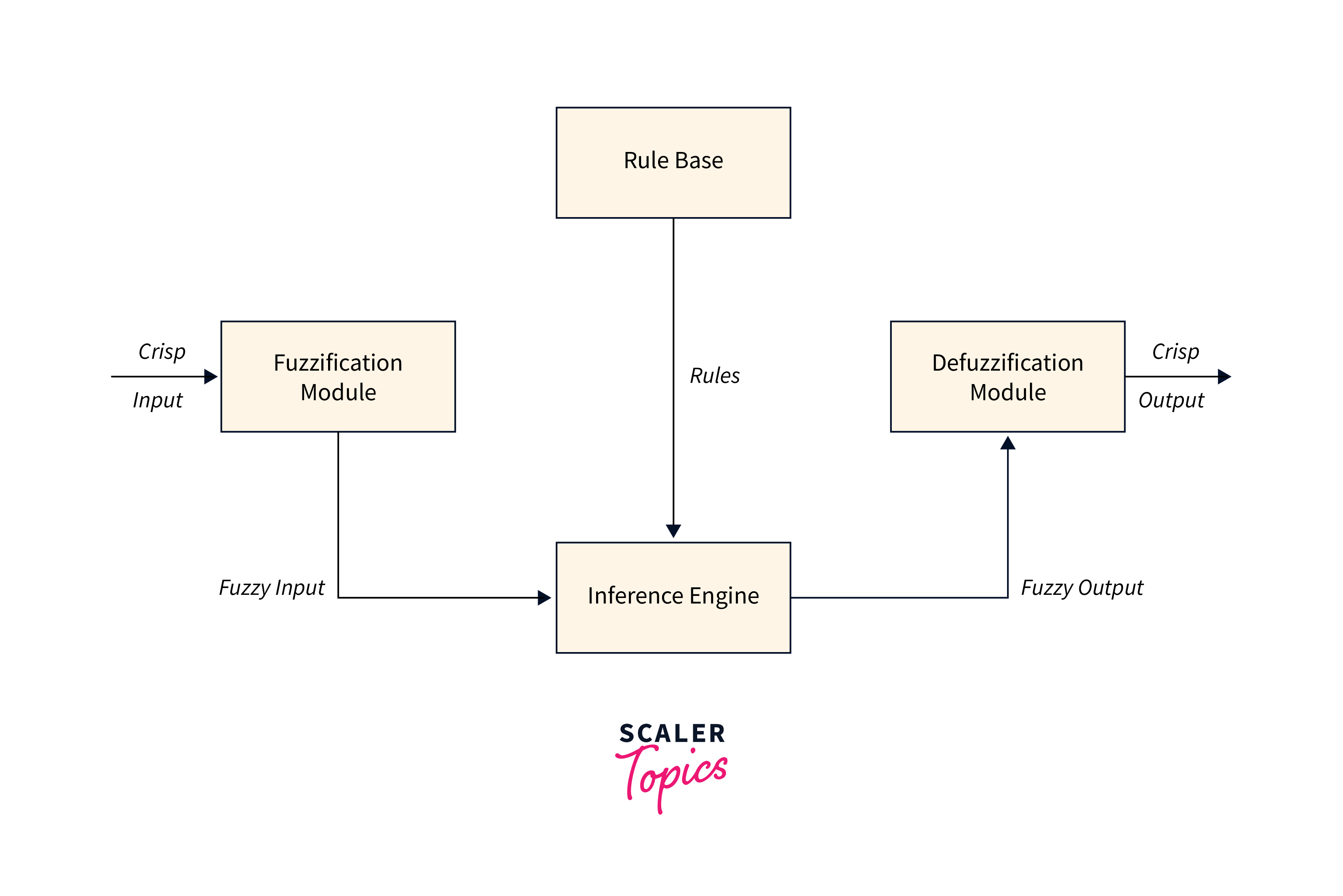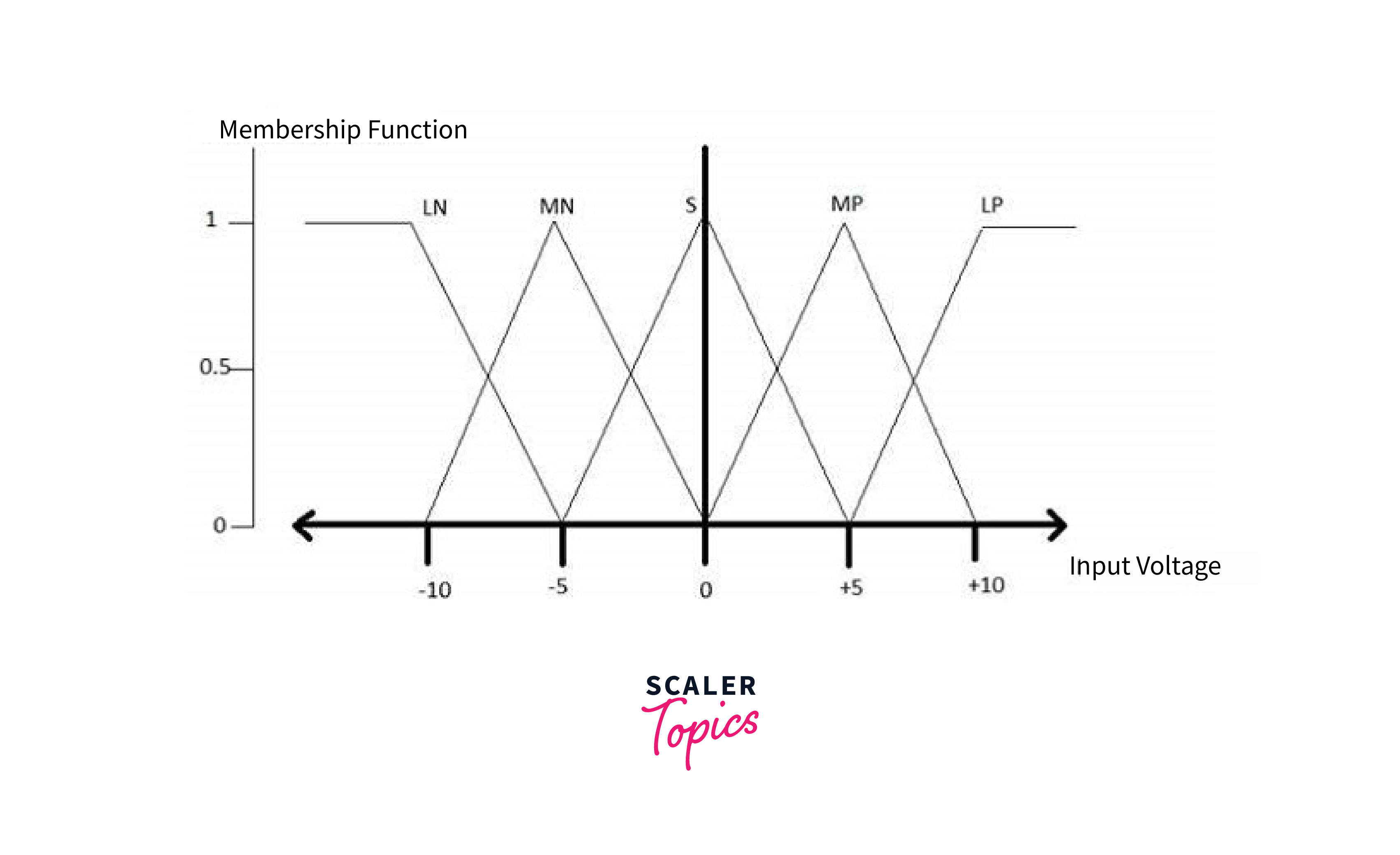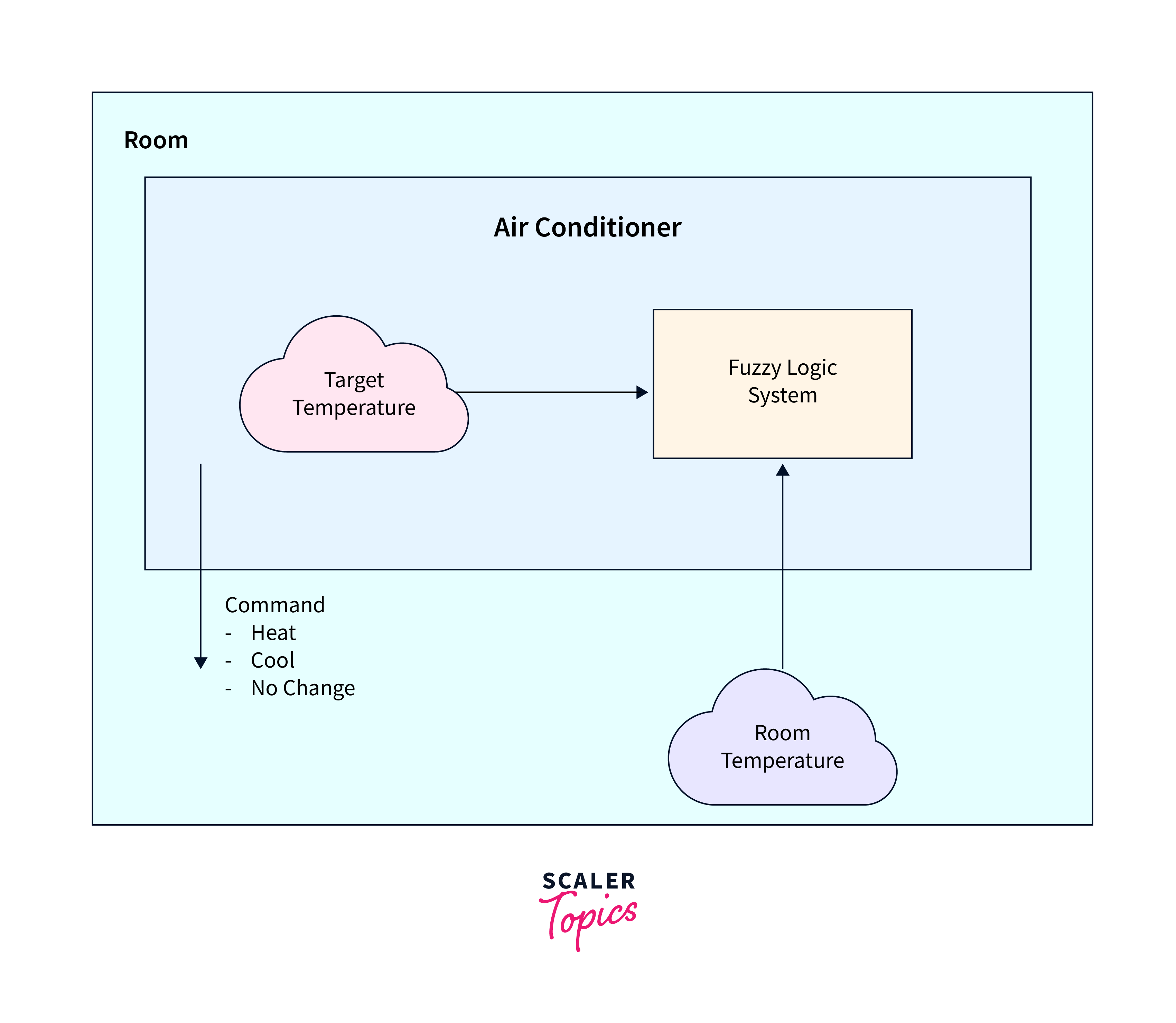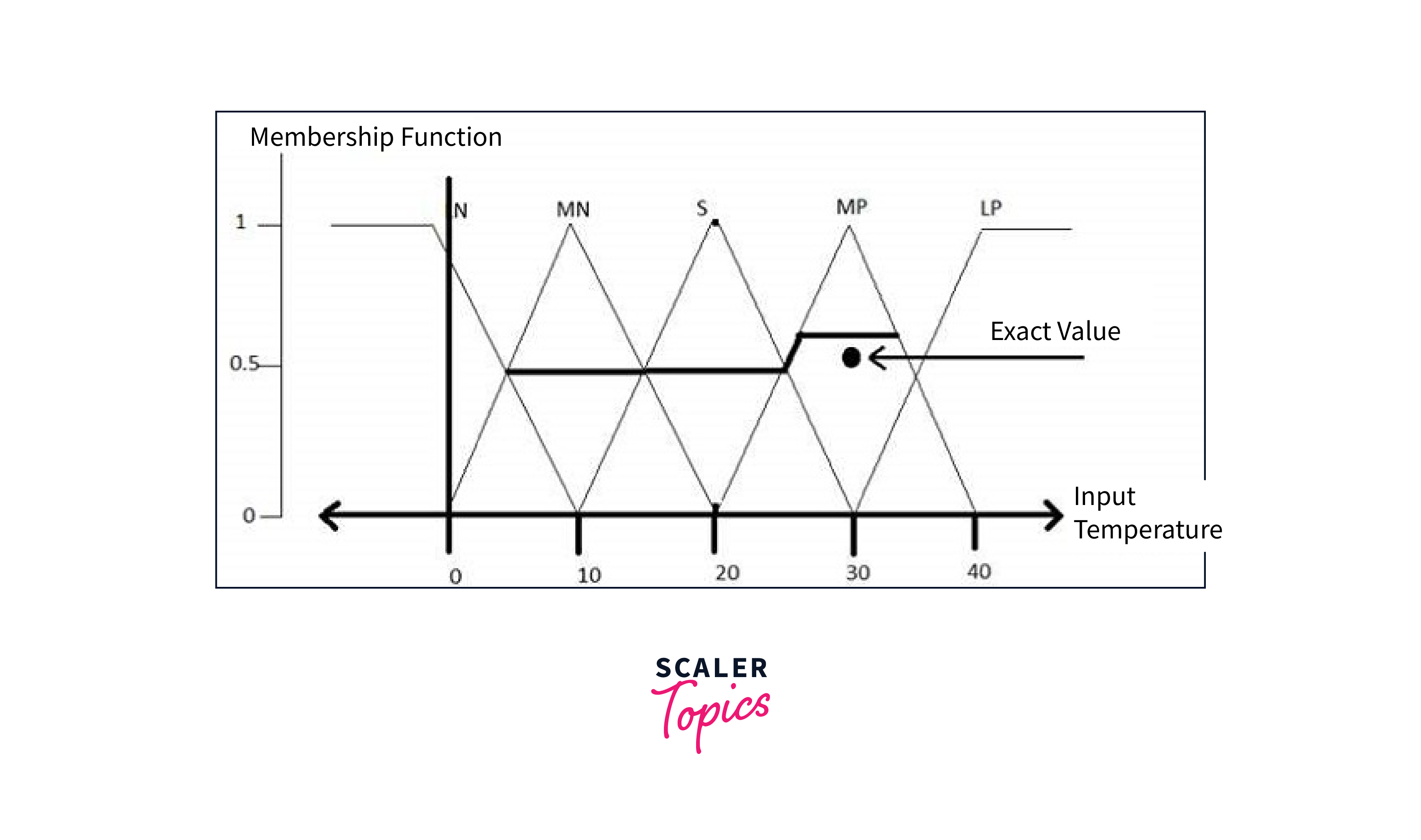Fuzzy Logic in Artificial Intelligence
Overview
Fuzzy logic in AI represents a paradigm shift from conventional boolean logic, enabling machines to reason more like humans by handling ambiguous or imprecise information.
What is Fuzzy Logic In Artificial Intelligence?
In artificial intelligence (AI), fuzzy logic is quite different from the usual yes-or-no approach we see with traditional logic. Instead of saying something is just true or false, fuzzy logic introduces a range of possibilities — a thing can be a little bit true, somewhat true, or very true, anywhere on a scale from 0 to 1. This way, AI systems can understand and deal with situations that aren't black and white, which is how things often are in the real world. Fuzzy logic is great for handling situations that are unclear or not exact, which we come across all the time. When AI uses fuzzy logic, it starts to think a bit more like a human, making decisions that feel more natural and work better in the complex world we live in.
Implementation of Fuzzy Logic In Artificial Intelligence
Using fuzzy logic in AI is about teaching computers to make sense of information that's not always black and white, similar to how people think. It starts by grouping data into what we call 'fuzzy sets.' Unlike regular groups with strict borders, these sets have flexible boundaries. Imagine sorting fruit by ripeness without saying exactly where 'ripe' starts or 'unripe' ends, but rather how ripe each piece is.
Once we have these fuzzy sets, we then make rules for the AI to follow. These rules are simple "if this, then that" statements that guide the computer on what to do with the information it gets. For example, if the temperature is 'kind of cold,' then the heater should turn 'a little' warmer. The computer looks at all these rules at once and makes a decision that's not just yes or no, but somewhere in between. This is quite different from the usual computer logic that's strictly yes or no, with no in-between.
Why Fuzzy Logic?
Fuzzy logic is integral in artificial intelligence for its ability to mimic the nuances of human reasoning, dealing adeptly with uncertainty and imprecision. Unlike traditional binary logic, fuzzy logic accommodates the complexities of real-world situations by allowing for degrees of truth rather than rigid true/false dichotomies. This flexibility enables AI systems to make more practical and realistic decisions in scenarios where information is ambiguous or incomplete. By embracing the variability and subtlety of human thought processes, fuzzy logic significantly enhances the adaptability and effectiveness of AI applications, making them more aligned with the unpredictable nature of real-world environments.
Fuzzy Logic Systems Architecture
- Input Variables: The first component involves identifying and defining the input variables that the system will process. These variables represent the aspects of the real world that the fuzzy logic system needs to interpret.
- Fuzzification Interface: This stage converts the crisp, real-world numerical inputs into fuzzy sets. It involves the application of membership functions to determine the degree to which these inputs belong to each of the relevant fuzzy sets.

- Fuzzy Rule Base: The core of the fuzzy logic system, the rule base consists of a collection of fuzzy IF-THEN rules. These rules establish the conditions under which certain actions or outputs should be taken, based on the fuzzy input values.
- Inference Engine: The inference engine processes the fuzzy inputs according to the fuzzy rules. It evaluates which rules are applicable and to what extent, combining the results to form a fuzzy output decision.
- Defuzzification Interface: The final step in the architecture, defuzzification, translates the fuzzy output decision into a crisp output. It involves techniques like the centroid method, which converts the fuzzy output into a single, specific number that can be acted upon.
Membership Function
Membership functions are mathematical constructs that assign a degree of belonging to terms expressed in language. They represent fuzzy sets visually and define a function named μA, which operates on a universe of discourse X and assigns to each element a value between 0 and 1. This value is known as the membership value or degree of membership, which quantifies how much an element in X is part of the fuzzy set A.
On the graph, the x-axis symbolizes the universe of discourse, while the y-axis indicates the degree of membership within the range of 0 to 1. A variety of membership functions may be employed to transform a numerical value into a fuzzy value. However, simpler functions are preferred as more complex ones do not necessarily yield more accurate results.
In the provided illustration, the membership functions for LP (Large Positive), MP (Medium Positive), S (Small), MN (Medium Negative), and LN (Large Negative) are depicted. Among the different shapes of membership functions like trapezoidal, singleton, and Gaussian, the triangular shape is the most commonly used.

In this example, the input for a 5-level fuzzifier spans from -10 to +10 volts, and as a result, the output is modified accordingly.
Example of a Fuzzy Logic System
A classic example of a fuzzy logic system in action can be seen in an intelligent temperature control system for a room. In this system, fuzzy logic is used to manage the heating or cooling based on inputs like the current room temperature, the desired temperature set by the user, and perhaps even external factors like the outside temperature or the time of day.
Here's how it works: The system first converts these numeric inputs (like the current room temperature) into fuzzy values using membership functions. It might classify the temperature as "cold," "comfortable," or "hot." These fuzzy values are then processed according to a set of fuzzy rules. For instance, a rule might state, "IF the room temperature is cold AND the outside temperature is cold, THEN increase the heating significantly." The fuzzy logic system evaluates all the relevant rules in this manner.

Algorithm
The algorithm of a fuzzy logic system in artificial intelligence typically follows these steps:
- Fuzzification of Inputs: Convert crisp, numerical input data into fuzzy values using membership functions. This step assesses the degree to which these inputs belong to each of the relevant fuzzy sets.
- Rule Evaluation: Apply the fuzzy logic rules from the rule base to the fuzzy inputs. These rules, typically in IF-THEN format, determine the system's response to different degrees of input truth.
- Aggregation of the Rule Outputs: Combine the outputs from all applicable rules into a single fuzzy output. This step involves the amalgamation of various fuzzy conclusions drawn from the rule base.
- Defuzzification: Convert the aggregated fuzzy output back into a crisp, actionable output. This is achieved through methods like the centroid calculation, which yields a precise, real-world action or value based on the fuzzy logic assessment.
Development
Step 1: Define Linguistic Variables and Terms Start by establishing the linguistic variables, which are the qualitative descriptors for the inputs and outputs. For instance, "very cold," "cold," "warm," "very warm," and "hot" categorize room temperature within a range of sensations.
Temperature (t) categories:
- Very Cold
- Cold
- Warm
- Very Warm
- Hot Each category encapsulates a segment of the temperature spectrum.
Step 2: Construct Membership Functions Develop graphical representations for these temperature categories, which quantify the variable's degree of association with a fuzzy set.
Example Membership Functions for an AC System:
- Very Cold (VC)
- Cold (C)
- Warm (W)
- Hot (H)
- Very Hot (VH)
Step 3: Construct Knowledge Base Rules Devise a set of if-then rules that connect various room temperatures to the target temperatures for an AC system.
Rules Matrix for Room Temperature vs. Target Temperature:
| Room/Target Temp | Very Cold | Cold | Warm | Hot | Very Hot |
|---|---|---|---|---|---|
| Very Cold | No Change | Heat | Heat | Heat | Heat |
| Cold | Cool | No Change | Heat | Heat | Heat |
| Warm | Cool | Cool | No Change | Heat | Heat |
| Hot | Cool | Cool | Cool | No Change | Heat |
| Very Hot | Cool | Cool | Cool | Cool | No Change |
Embed these rules into the knowledge base in the format of if-then-else constructs.
Sample Rules:
- IF temperature is (Cold OR Very Cold) AND target is Warm THEN action is Heat
- IF temperature is (Hot OR Very Hot) AND target is Warm THEN action is Cool
- IF temperature is Warm AND target is Warm THEN action is No Change
Step 4: Obtain Fuzzy Value Carry out fuzzy set operations to assess the rules. Use maximum (Max) for OR conditions and minimum (Min) for AND conditions. Integrate the outcomes to formulate a composite fuzzy result.
Step 5: Perform Defuzzification Conduct defuzzification according to the output variable's membership function, which translates the fuzzy value into a definitive, actionable quantity.
Defuzzified Output Value: The final crisp value derived from the fuzzy input after defuzzification.

Application Areas of Fuzzy Logic
- Automotive Systems: In automotive systems, fuzzy logic is used to enhance vehicle control systems, such as improving the responsiveness of anti-lock braking systems (ABS) and optimizing fuel injection for better engine performance.
- Consumer Electronic Goods: Fuzzy logic finds application in consumer electronics, notably in cameras for improved focus and exposure control, and in smart TVs for better picture quality adjustment based on viewing conditions.
- Domestic Goods: In the realm of domestic goods, fuzzy logic is employed in appliances like washing machines for optimal water and energy usage based on load size and fabric type, and in air conditioners for maintaining desired comfort levels.
- Environment Control: For environment control, fuzzy logic is used in systems like smart thermostats, which intelligently adjust heating and cooling settings based on various environmental factors and user preferences, leading to enhanced energy efficiency and comfort.
Advantages
- Handling of Uncertainty and Imprecision: Fuzzy logic excels in processing data that is uncertain or imprecise, making it ideal for real-world applications where information is often incomplete or ambiguous.
- Flexibility: The flexible nature of fuzzy logic allows it to model complex, nonlinear systems more effectively than traditional binary logic, adapting to varying input without the need for precise thresholds.
- Intuitive Approach: Fuzzy logic mimics human reasoning by dealing with concepts like 'somewhat true' or 'fairly important', making the logic more intuitive and easier to comprehend and implement.
Disadvantages
- Complexity in Understanding and Implementation: Despite its intuitive approach to problem-solving, the underlying theory and implementation of fuzzy logic can be complex, posing challenges in understanding and applying it effectively.
- Computational Intensity: Fuzzy logic systems can be computationally intensive due to the need to process a range of values for each input, rather than simple binary choices, potentially leading to higher processing times.
- Difficulty in Establishing Precise Rules and Membership Functions: Defining the appropriate fuzzy rules and membership functions requires expert knowledge and can be a challenging and time-consuming task, especially in highly complex systems.
Conclusion
- Fuzzy logic in AI represents a significant step towards bridging the gap between human reasoning and machine precision, allowing for more nuanced and adaptive decision-making in AI systems.
- With its flexible and intuitive nature, fuzzy logic finds diverse applications across various fields, from automotive and consumer electronics to domestic goods and environmental control, showcasing its versatility.
- While fuzzy logic excels in handling ambiguity and complexity, it does come with trade-offs in terms of precision and computational demands, highlighting the need for balanced application.
- The development and implementation of fuzzy logic continue to evolve, with ongoing research and innovation aimed at overcoming its limitations and enhancing its integration with other AI technologies.
